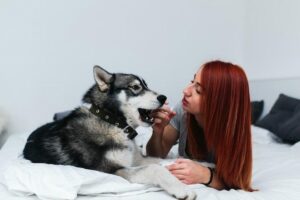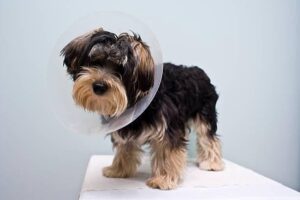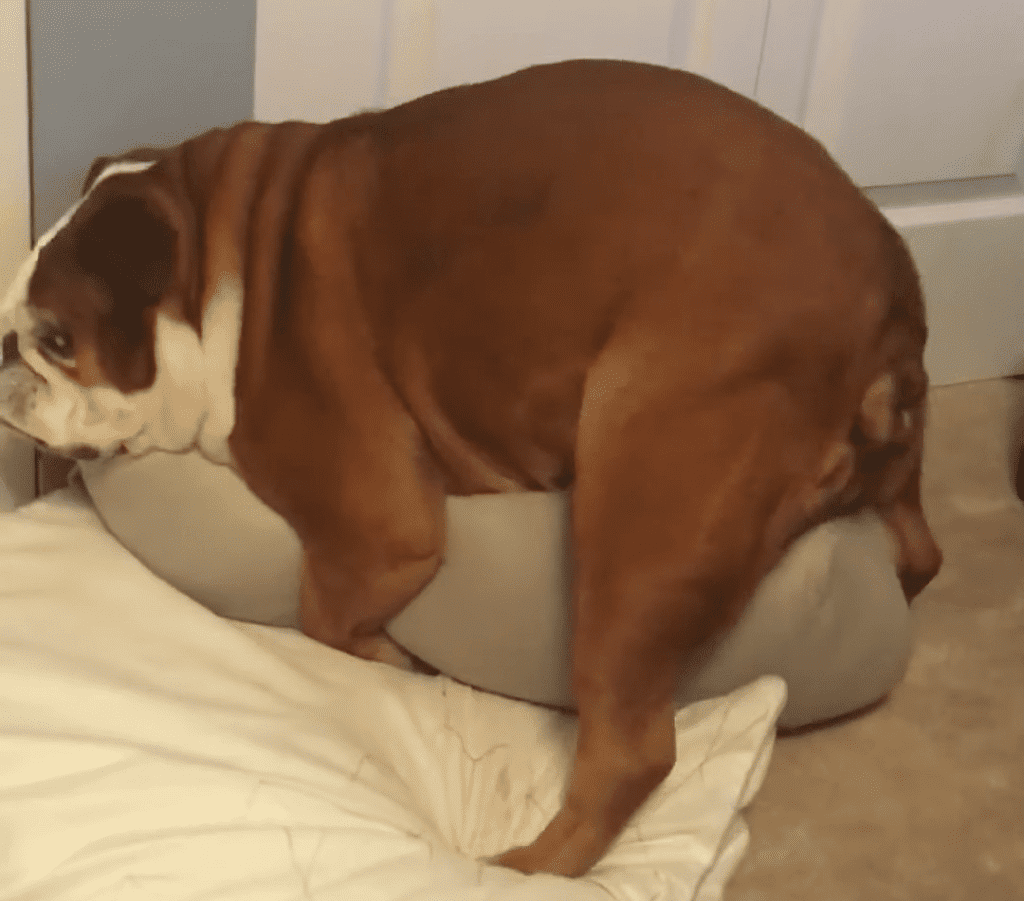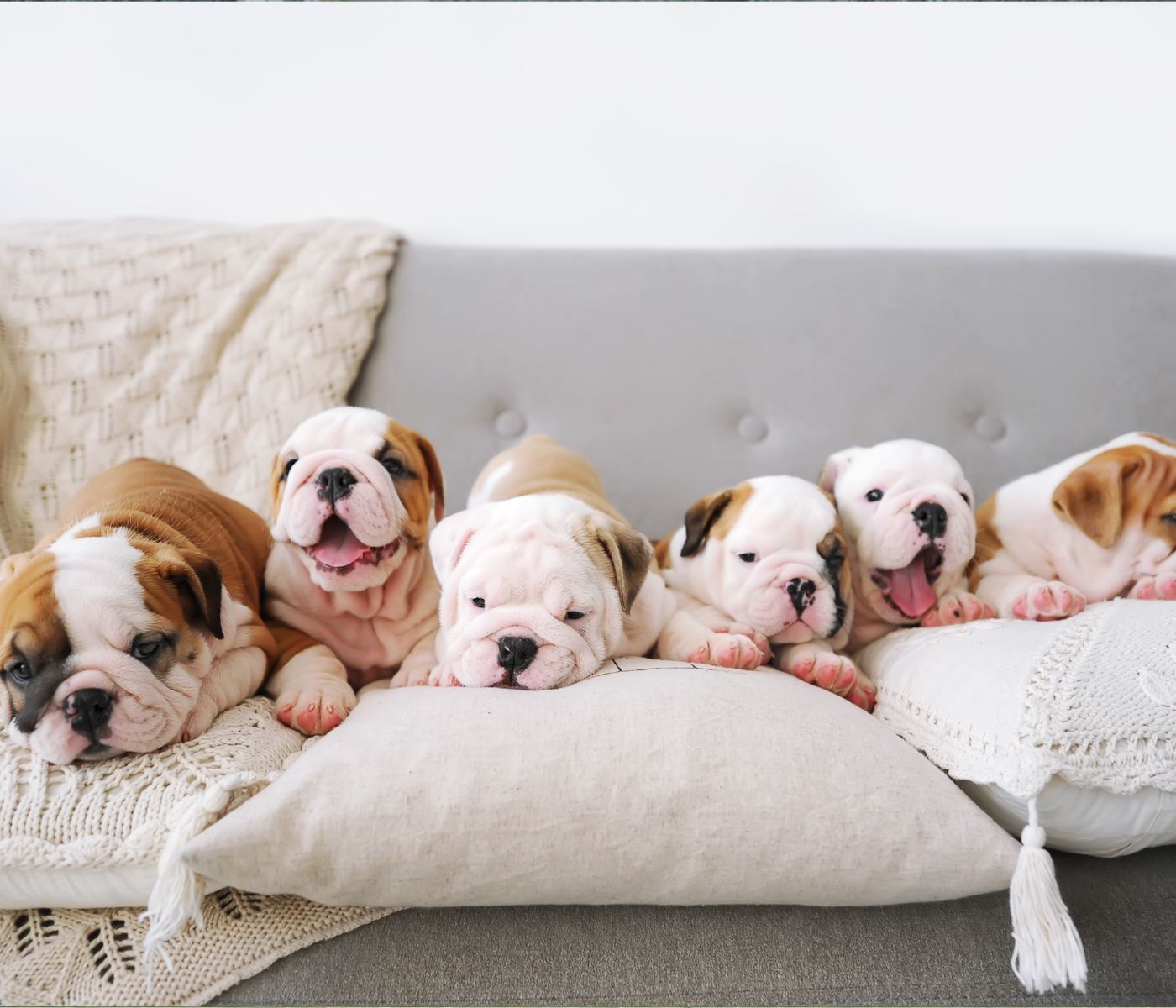Puppies have an adorable and playful nature that can be entertaining for their owners, but sometimes, their behavior can cause concern.
Humping is typical for puppies, and it is often seen as harmless, especially when they do it with their toys or pillows.
However, this behavior can sometimes become a problem, leading to destruction or frustration, especially when the puppy cannot continue the behavior.
As a responsible pet owner, it is essential to understand the significance of humping behavior in puppies and whether it should be stopped.
Humping is a normal part of a puppy’s development and is often seen as a form of play and exploration. It is an instinct for them to engage in this behavior, especially during the teething stage when they need to chew and bite on objects.
In some cases, humping can signify dominance or a way for the puppy to assert its presence.
While humping pillows may not seem like a big deal, it is essential to consider that this behavior could lead to more problematic habits.
If the puppy is not redirected to appropriate toys and positive reinforcement training is not provided, it could become a difficult habit to break later.
In addition, humping other animals or people could be a sign of dominance or aggression, which is not acceptable behavior and should be addressed immediately with the help of a professional dog behaviorist.
Understanding the Reasons Behind Dog Humping:

Dominance:
- In some cases, humping can signify dominance or an attempt to assert dominance over a person, object, or another dog. This behavior is most common in young puppies but can happen at any age.
A dog may hump a pillow if he’s trying to assert dominance over the object or person currently holding it.
If you notice your puppy humping pillows, barking and growling at people or other dogs, or showing signs of aggression such as snarling and snapping, seek help from an animal behaviorist as soon as possible.
Over-excitement:
Dogs may hump when over-excited or overstimulated, for example, during playtime or when greeting someone. Many dogs will hump when they are excited, especially puppies.
This is an excellent way for them to release energy and pent-up frustration. If your dog starts humping while playing with other animals or people; it could be because he’s overstimulated by the situation and needs a break.
Sexual Frustration:
Unneutered or un-spayed dogs may hump due to sexual frustration, especially if they are not getting enough exercise or mental stimulation.
This can be a concern for owners of indoor dogs, primarily if they do not provide enough stimulation and exercise. Male dogs may hump when in heat (or “on”), but female dogs don’t have a period during which they are fertile.
Dogs that are not spayed or neutered may hump at any time of year, including during the “off” season. This is because they have not been altered, but it is also possible that they are sexually frustrated due to a lack of stimulation.
Stress:
Some dogs may hump as a coping mechanism when feeling stressed or anxious. Humping can be a sign that the dog is trying to relieve stress. This can be especially true if the dog is left alone without adequate stimulation or exercise.
If you notice your dog doing this when you leave the house, it’s essential to provide them with some stimulation while you are gone. This can be as simple as playing with toys or giving them something to chew on.
How to Determine if Your Puppy is Humping Out of Dominance or Sexual Frustration?

- Observe their body language: If your puppy is humping out of dominance, they may have a stiff, upright posture, and their tail will be held high.
- Consider their age and breed: Humping is more common in certain breeds, and dogs are still in adolescence.
- Look for other dominant behaviors: If your puppy is humping as a sign of dominance, it may also show other dominant behaviors, such as growling or biting.
How to Stop Your Puppy from Humping?
- Neutralize the Stimulus: Remove the object that your puppy is humping or distract them with another activity.
- Teach Your Puppy Not to Hump: When your puppy begins to hump, say “no” and gently push their nose away from the object. This will encourage them to continue the behavior.
- Punishment: Do not punish your puppy for humping. This will only make them more interested in doing it again.
- Provide an Alternative: Reward your puppy for performing alternative behaviors, such as sitting or lying down.
- Use positive reinforcement: Reward your puppy when they stop humping and reinforce good behavior.
- Provide Enough Exercise and Mental Stimulation: Regular exercise and mental stimulation can help reduce stress and prevent boredom, which can reduce the likelihood of humping.
- Create a Routine: A daily schedule can help your puppy feel more secure and less anxious, which may reduce their humping.
- Provide Appropriate Toys and Chew Items: Providing durable toys and chew items will give your puppy an acceptable way to release energy instead of humping.
- Neuter or Spay Your Dog: If your puppy is humping due to sexual frustration, neutering or spaying can help reduce the behavior.
When to Seek Professional Help?

- If the humping is persistent: If your puppy continues to hump even after you have tried to stop the behavior, it may be necessary to seek professional help.
- If the humping is aggressive: If your puppy becomes aggressive when humping, it is essential to seek professional help to prevent the behavior from escalating.
- If the humping is causing distress: If the humping is causing distress to either yourself, your guests, or your puppy, it may be necessary to seek professional help.
- If the humping is causing physical injury: If your puppy’s behavior is causing physical injury to you or your guests, it may be necessary to seek professional help. If the humping is becoming obsessive: If your puppy starts to hump more frequently, it may be time to seek professional help.
FAQs:
Q: Is humping pillows normal behavior for puppies?
A: Yes, humping is normal for puppies, especially during the play and exploration phase. Humping is a way for your puppy to learn about their bodies and the world around them, so if they are humping pillows or blankets, it’s nothing to worry about.
Q: Can humping pillows lead to any issues for my puppy?
A: Humping is normal for puppies; however, if your puppy continues to hump after the play and exploration phase, it may be time to seek professional help.
Q: If my dog humps other dogs or people, is that normal?
A: Yes, but it can cause some issues with other dogs or people if they are not okay with being humped by your puppy. It’s essential to teach them how to greet others, so they don’t make anyone uncomfortable.
Q: Is it cruel to stop my puppy from humping pillows?
A: No, it is not cruel. Providing appropriate training and guidance to your puppy is a responsible and loving act. It is important to note that humping is a normal behavior for puppies. Still, it can become an issue if your puppy continues the behavior after the play and exploration phase of their life.
If your dog humps other dogs or people, and they are not okay with being humped by your puppy, then it’s essential to teach them how to greet others, so they don’t make anyone uncomfortable.
Q: Should I be concerned if my puppy is humping other animals or people?
A: Yes, humping other animals or people could be a sign of dominance or aggression and should be addressed immediately with the help of a professional dog behaviorist.
If your puppy is humping other puppies or adults, it’s essential to step in and separate the two. You don’t want your dog to learn that this behavior is acceptable when they are around other dogs.
